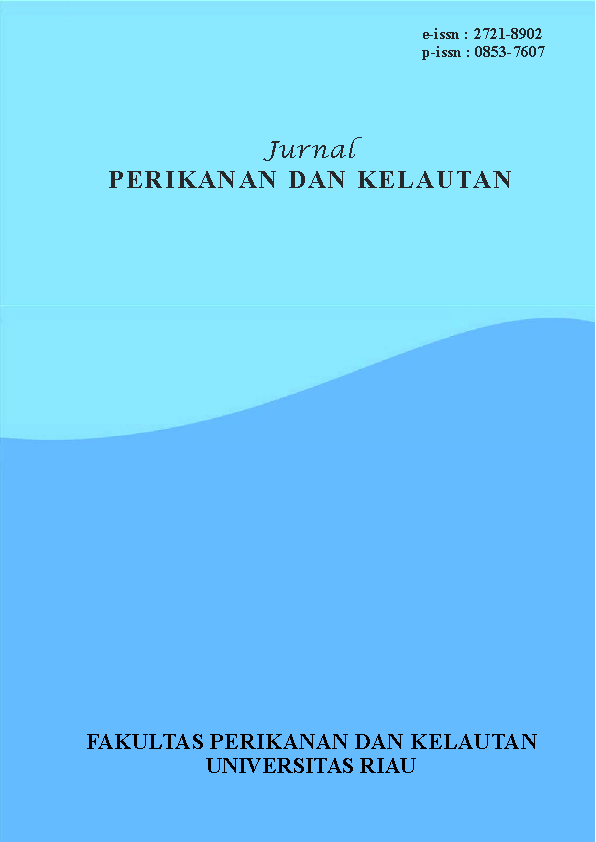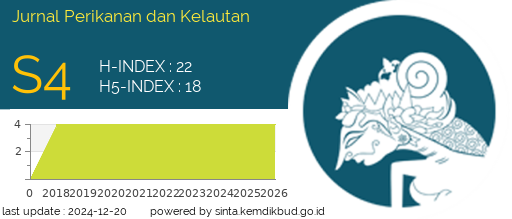Condition of Singingi River Water Quality Due to Unlicensed Gold Mining (PETI) in Tanjung Pauh Village, Singingi Hilir District, Kuantan Singingi Regency
DOI:
https://doi.org/10.31258/jpk.29.3.355-360Keywords:
Singingi River, Gold Mining, Water Quality AnalysisAbstract
Rivers play a vital role in society by preserving clean water resources, cultivating fish, and supporting daily life. In Tanjung Pauh Village, the Singingi River has experienced a decline in water quality due to human activities, namely Unlicensed Gold Mining without permission activities. The research was carried out in March-May 2024. The method used in this research was field surveys and measurements of physical and chemical parameters. Sampling was carried out at three stations: Station 1, an oil palm plantation area; Station 2, a gold mining area; and Station 3, an area downstream of the Singingi River due to the confluence of the Sushadow River and the Singingi River. The research results show that the value of temperature ranged from 28.8 - 33°C, brightness ranged from 2.48-3.11 cm, turbidity ranged from 85.6 - 251.2 NTU, current speed ranged from 4.85 - 7.06 m/s, TSS ranged from 145–182.6 mg/L, and depth ranges from 350 – 533 cm. Chemical parameters, namely dissolved oxygen ranges from 5,5 – 5,7 mg/L, pH 5, BOD5 ranges from 3– 3.6 mg/L, TOM ranges from 11.7 – 15.2 mg/L, COD ranges from 85.3 – 297.3 mg/L. According to PP no. 22 of 2021 class III concerning the Implementation and Management of the Environment. The waters of the Singingi River are polluted, which falls into the mild to heavily polluted category. Six parameters have passed the threshold regarding physical parameters, namely temperature, brightness, turbidity, and TSS and based on chemical parameters, namely pH and COD.
Downloads
References
Alaerts, G., & Santika, S.S. (1987). Water Research Methods. Surabaya: National Enterprise, 309.
Anjami, T., & Nurhamlin, N. (2018). Social Impact of Gold Mining Without a Permit (Cot) in Sungai Sorik Village, Kuantan Hilir Seberang District, Kuantan Singingi Regency. Pascasarjana. Universitas Riau
Ali, A., Soemarno, S., & Purnomo, M. (2013). Study of Water Quality and Water Quality Status of the Metro River in Sukun District, Malang City. Sustainable Earth Journal, 13(2): 265-274
Handayani, T., & Veronica, E. (2022). Analysis of Water Quality Due to Gold Mining in the Manuhing River, Gunung Mas Regency. Journal of Tropical Fisheries, 17(2): 57-65.
Harahap, S. (1999). Level of Water Pollution in Tanjung Balai Karimun Harbor, Riau Islands, Seen from the Macrozoobenthos Community. Riau University Research Institute. Pekanbaru. 26 p.
Hasim, H., Koniyo, Y., & Kasim, F. (2015). Physical-chemical Parameters of Limboto Lake Waters as a Basis for the Development of Freshwater Aquaculture. Scientific Journal of Fisheries and Marine Affairs, 3(4): 130–136.
Nurrachmi, I. (1999). Physical-Chemical Quality of Water Around the Dumai Oil Harbor Dredging Mud 'Dumping Area'. Berkala Perikanan Terubuk, 27(76): 2 – 13.








